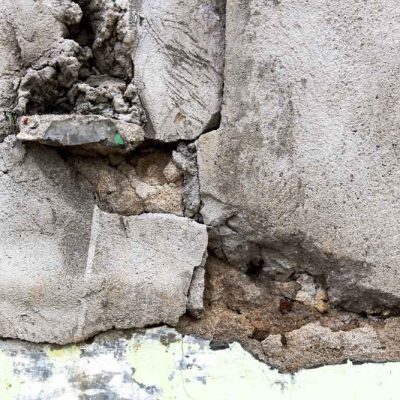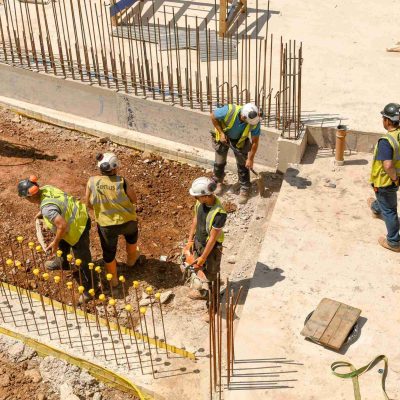Temperature plays a crucial role in the settling process of concrete. The significance of temperature lies in its impact on the hydration process, which is the chemical reaction between cement and water that causes the concrete to harden and gain strength. During the initial stages of concrete placement, temperature affects the rate of hydration.
Higher temperatures accelerate the reaction, leading to faster setting and hardening of the concrete. Conversely, lower temperatures slow the hydration process, prolonging the setting time. Controlling the temperature is vital to ensure the proper development of concrete’s strength and durability.
Suitable Temperature for Effective Concrete Settling
In the UK, the suitable temperature for concrete placement and curing is generally aligned with international standards. The recommended temperature range for concrete is typically between 5°C and 30°C (41°F and 86°F), as specified by British Standards (BS) and the Concrete Society.
Within this range, the hydration process occurs at an optimal rate, ensuring proper strength development and durability of the concrete.
Effects of Temperature on Concrete Settling
The effects of low and high temperatures on concrete settling can significantly impact the overall quality and durability of the concrete. Here are the effects of both low and high temperatures:
Low Temperature
Delayed Setting: The hydration process slows in colder temperatures, leading to delayed setting and longer initial curing times.
Reduced Strength Gain: Low temperatures can hinder concrete strength development, as the hydration process is slower. It may take more time for the concrete to achieve its desired strength.
Increased Risk of Cracking: Rapid cooling or freezing temperatures can cause thermal stress and potential cracking in the concrete. Frozen water inside the concrete mix can expand, leading to internal damage and reduced structural integrity.
Poor Workability: Lower temperatures reduce the workability and fluidity of the concrete mix, making it more challenging to place and consolidate properly.
High Temperature
Accelerated Setting: Higher temperatures accelerate the hydration process, causing faster setting times. This can reduce the available working time for placing and finishing the concrete.
Reduced Workability: The rapid hydration caused by high temperatures can decrease the workability of the concrete, making it challenging to handle and place.
Increased Water Demand: High temperatures can cause increased water evaporation, leading to higher demand. Not adequately compensated can result in lower concrete strength and increased porosity.
Increased Risk of Cracking: Rapid drying caused by high temperatures and excessive evaporation can lead to shrinkage cracks in the concrete. The rapid temperature changes can also cause thermal stress and cracking.




Precautions for Cold Weather Placement of Concrete
It is essential to prevent young concrete from cooling below freezing point, as it may render it unfit for use and severely damage its integrity. Below are some key precautions for an effective settling of concrete.
Two Temperature Considerations
Ambient Air Temperature: The surrounding air temperature during concrete placement in cold weather.
Concrete Temperature: The temperature of the concrete at the time of delivery.
Freezing of Freshly Placed Concrete
- When freshly placed concrete cools below 0°C, the water in the concrete mixture freezes and expands, potentially damaging the concrete.
- Concrete should be left intact to gain strength of 2 N/mm2 before it is exposed to freezing temperatures. This helps avoid the disruptive expansion of the concrete.
- It is essential to keep the concrete warm above 5°C for the first two days as low temperatures slow down the strength development in the concrete.
Managing Temperatures for Concrete Setting
- If the ambient temperature is below 5°C yet there is no frost, then there is no risk of permanent damage to the concrete; however, it will settle slowly.
- The temperature of the freshly placed concrete should be less than 5°C at the time of laying. Also, it should be protected from freezing. For this purpose, choose a frost blanket insulated formwork for concrete safety.
- In case of severe frost around the clock, you should have heated concrete having 10°C temperature at the time of laying.
- If you cannot find the heated concrete, you should wait for the ambient temperature to be at least 2°C as severe low temperatures not only slow its setting time but also cause permanent damage to the concrete.
Protection Measures
- Use insulated formwork and frost blankets to protect freshly placed concrete from freezing.
- It is important to check whether formwork, sub-bases and reinforcement are ice-free before placing a frost blanket.
- Timber formwork provides insulation, but additional measures like covering exposed surfaces with insulating material or using temporary covers with space heaters may be required.
Delayed Strength Development
- During cold weather, concrete settings take longer durations and develop strength slowly.
- Formwork should not be removed prematurely, as the rate of strength gain depends on factors such as ambient temperature.
Adjusted Curing Periods:
- Curing periods should be adapted based on environmental conditions during colder weather.
- Concrete should be covered to maintain a temperature above freezing and heated if necessary.
Avoid Frozen Ground or Surfaces:
- Concrete should not be placed where the ground, oversite, or surfaces in contact with the concrete are frozen.
- One must be careful while adding fresh and small quantities of concrete to a large volume of stiff concrete at lower temperatures.
Insulation for Slight Overnight Frosts:
- Using 50mm of insulation firmly held at the edges for slight overnight frosts can help protect oversite concrete.
- Insulation alone is inadequate in severe frosts, and heating should be provided.
Site-Mixed Concrete:
- If the air temperature drops to 2°C, concrete work should not proceed unless specific conditions are met.
- Concrete work should not be carried out if the ambient temperature is 2°C, and one should wait unless the required temperature conditions are met.
- Before laying the concrete, ensure that the ground for the concrete is not frozen.
- Additionally, ensure that the aggregate is free of snow with a temperature above 2°C.
- Mixing water should be heated but not exceed 60°C (cement should not be heated).
- Proper protection measures should be in place for the cast concrete, considering cross-sectional area and location.
Prolonged or Severe Cold Weather:
- Covers alone may not prevent severe frost from penetrating the aggregate.
- Additional measures, such as steam heating aggregates or hot air blowers below covers, may be necessary in such cases.
- Heating the mixing water may not be sufficient to thaw frozen aggregates, and very cold aggregates may remain frozen.
Conclusion
When concreting in cold weather, it is crucial to adjust curing periods, maintain a temperature above freezing, and avoid placing concrete on frozen surfaces. Insulation and heating measures should be employed to protect the concrete.
Caution is necessary when placing fresh concrete against colder hardened concrete. Specific criteria must be met for site-mixed concrete; additional precautions may be required in prolonged or severely cold weather. By following these precautions, the quality and durability of the concrete can be ensured in cold weather conditions.

